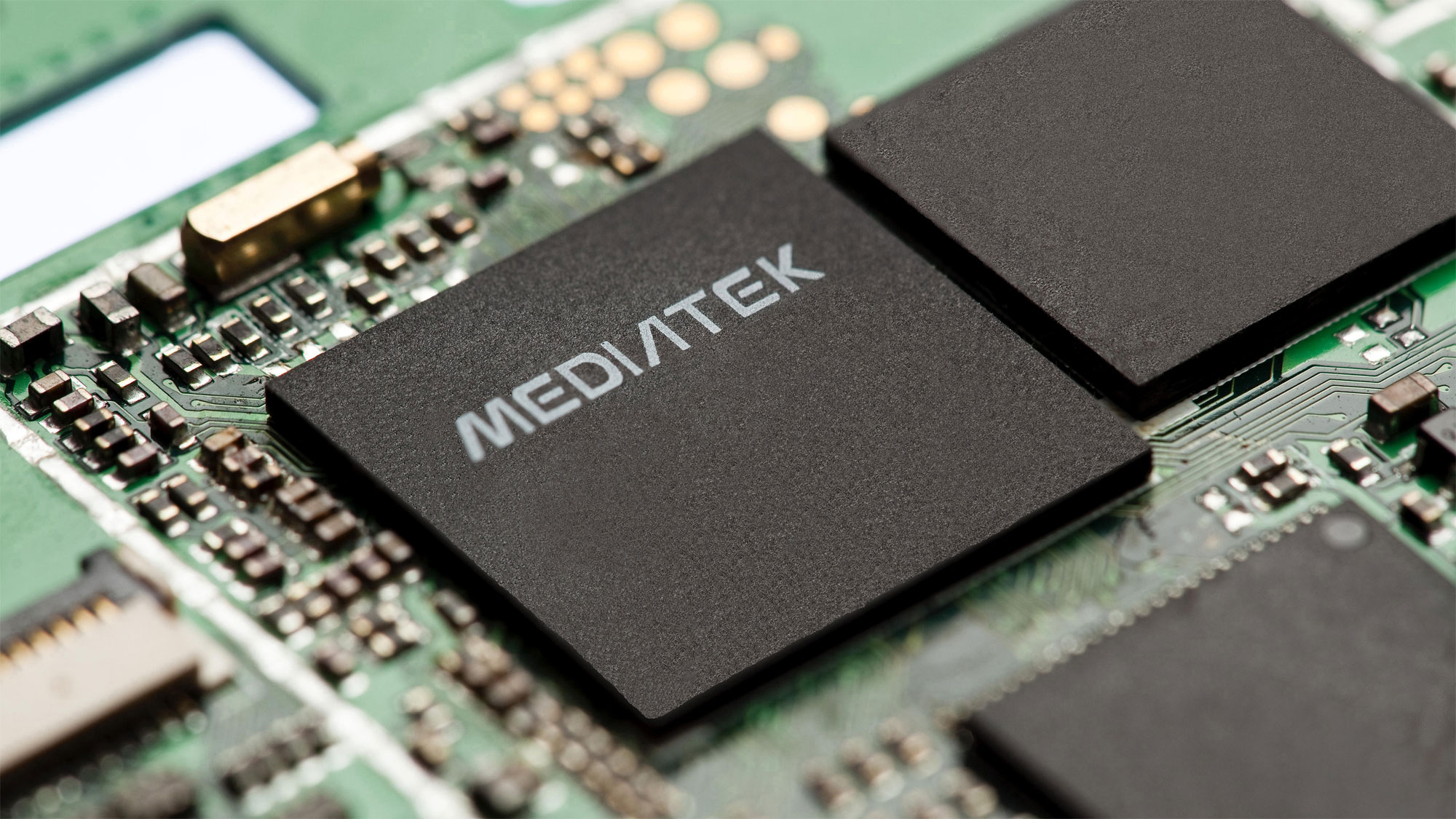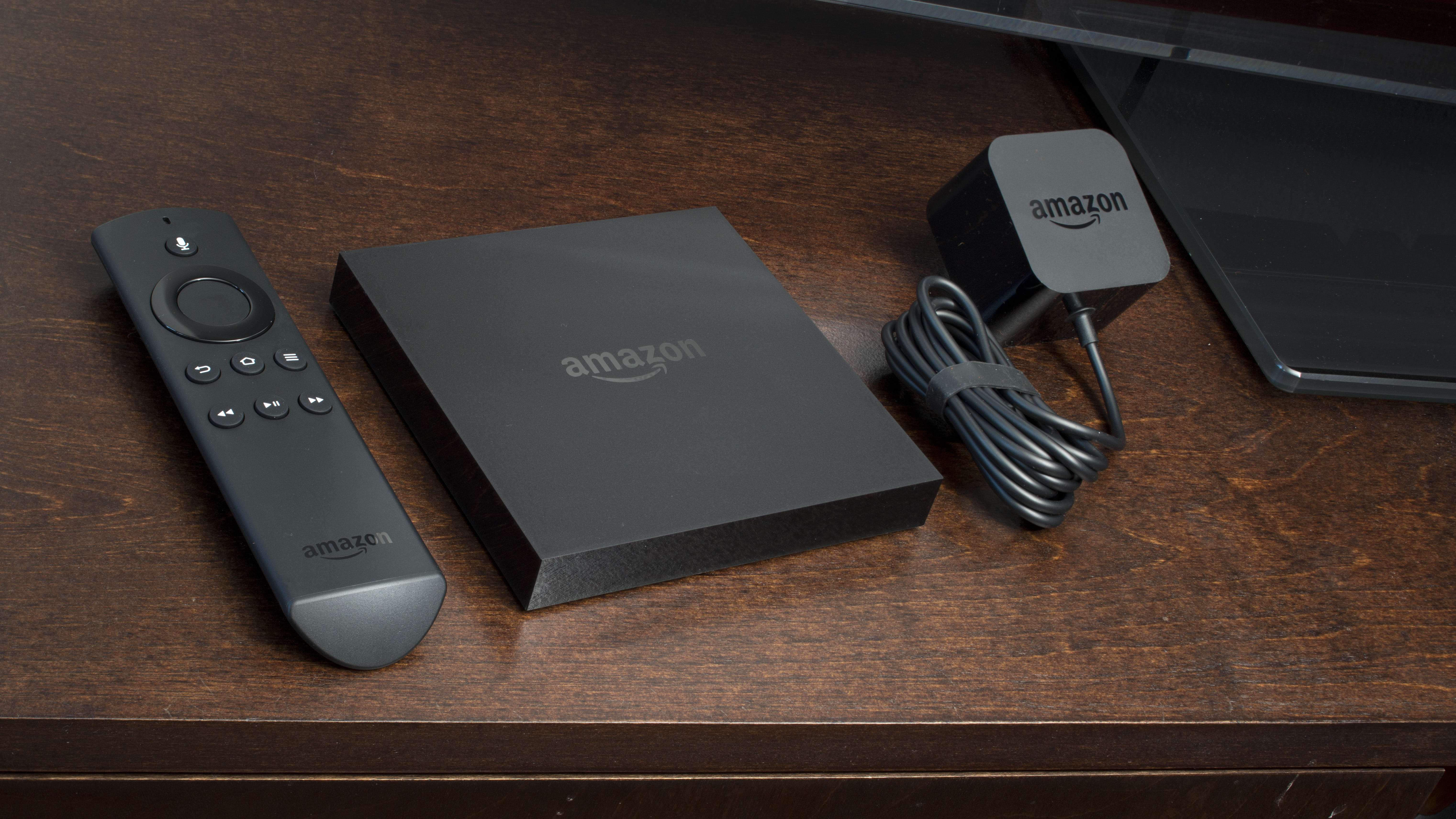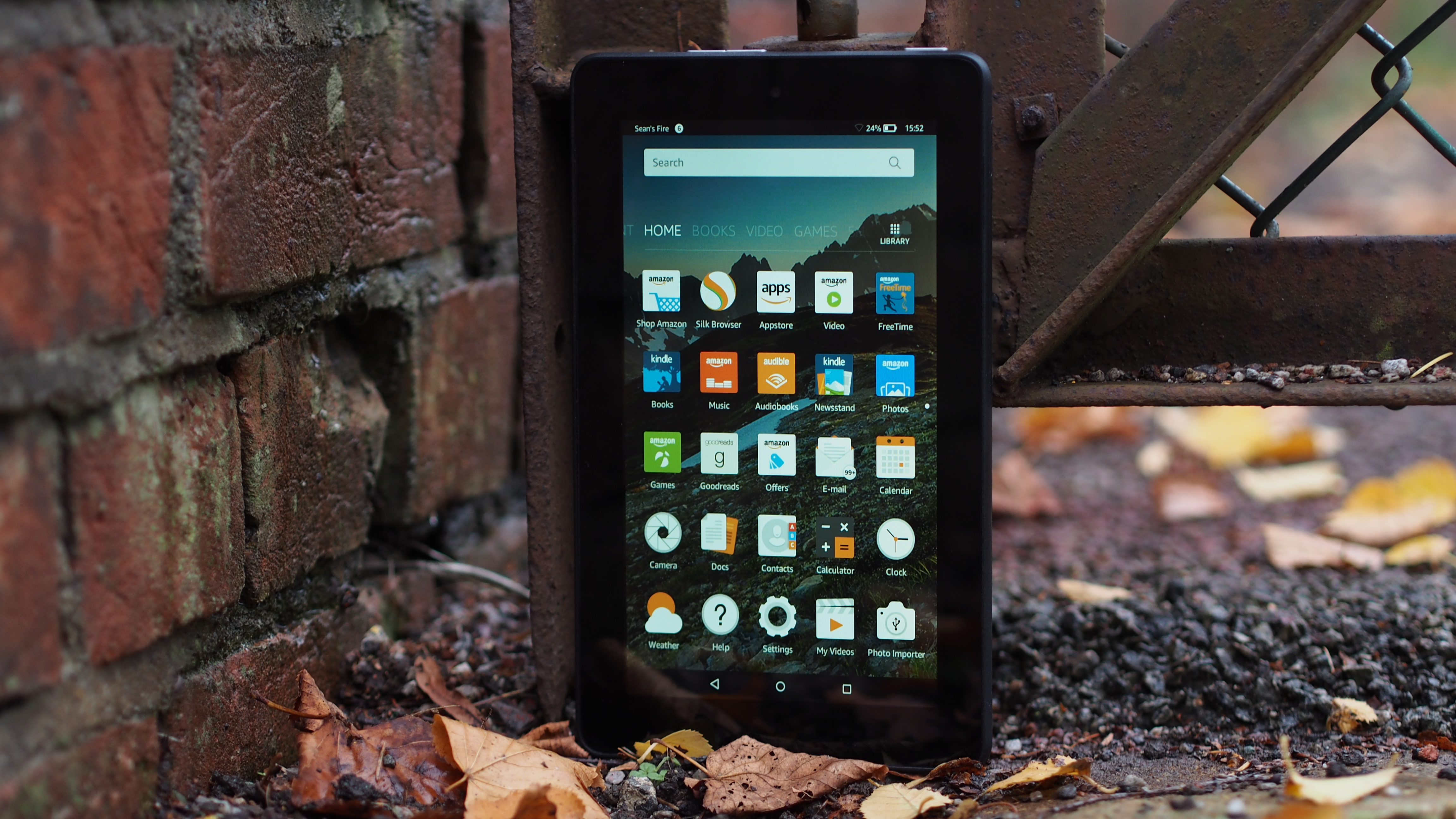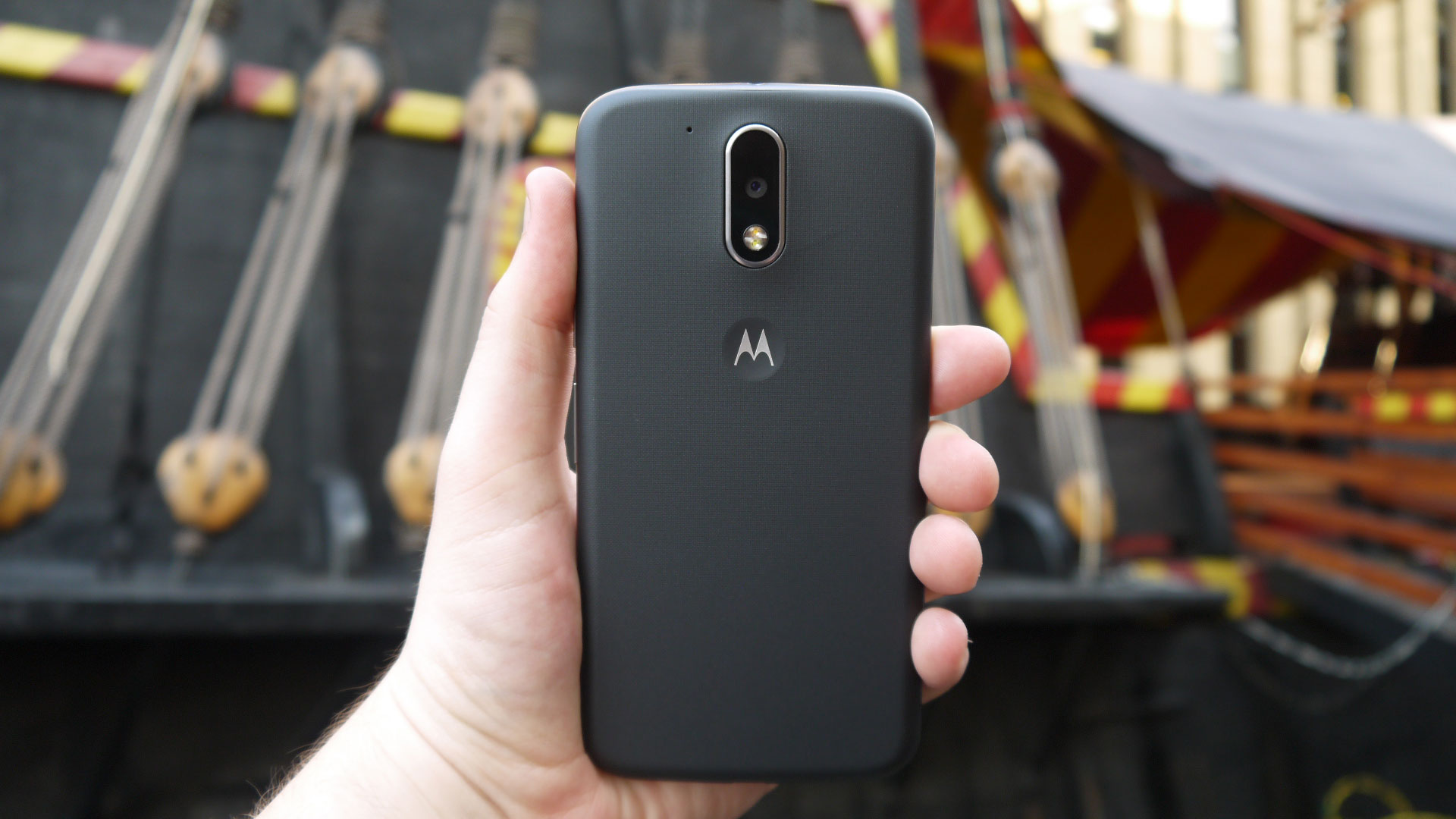MediaTek: meet the chip maker that has powered your favorite gadgets for years
And, how you're going to see a lot more of it soon

When was the last time you thought about what's inside your phone or that set-top box under your TV? Not the thousands of photos or movies you've downloaded, but what's physically inside of it. We're talking about the hardware inside those devices that makes it go.
Sure, you've probably heard of Intel and Nvidia – they spend a fortune in marketing making sure that you have. But, there's one firm whose chips have been inside some of your mobile and entertainment devices for years, likely unbeknownst to you: MediaTek.
If you're reading this article on a mid-range Sony or HTC phone, chances are it's running on a MediaTek processor inside. (The same goes for those of you using an Amazon Fire TV or tablet on the regular.)
So, to learn more about one of the biggest SoC (system on a chip) makers that's poised to make a splash in the years to come, we sat down with MediaTek GM of corporate sales international Finbarr Moynihan. As it turns out, Moynihan had quite a bit to say for not just MediaTek, but in explaining just what an SoC is and how it's different from the processor in your laptop.
TechRadar: Since it's been a little while since we've heard about MediaTek, can you give us a bit of reintroduction?
Finbarr Moynihan: MediaTek's business is heavily centered on the consumer space. Last year, [our business] was just under $7 billion – the third largest, fabless semiconductor company in the world. So, Qualcomm, Broadcom, MediaTek – in terms of revenue.
Very roughly, our business divides into two-thirds, one-third, two-thirds being mobile. And one-third is what we call "Home". But, home for us is everything from digital TVs, connected Blu-ray players, over-the-top set-top boxes as well as our business for home Wi-Fi, so access points, routers, range extenders – that kind of thing.
Get daily insight, inspiration and deals in your inbox
Sign up for breaking news, reviews, opinion, top tech deals, and more.
To put it into context you might be familiar with, all of Sony's Android TVs are MediaTek based. So, we were the lead platform for Android TV. Again, so Sony's 4K, Ultra HD connected Bravia TVs are all based on MediaTek.
Vizio is a TV customer, a company that's been in the news recently after the acquisition. But, as well as that, Sharp, Philips have also launched Android TVs based on MediaTek – globally.

Another example of MediaTek in the home is our relationship with Amazon. We've had a multi-year relationship with Amazon. It started from the mobile space, the tablets – all of the Kindle Fire tablets are based on MediaTek SoCs [systems on a chip].
And then, last year, they also used our solutions for their 4K Fire TV box. That's our SoC [and] our connectivity inside that platform since last year. That's been quite a successful product for those as well.
Because Amazon's a partner, I like to buy all of their stuff, even if we're not in it. I had bought the first-generation, which wasn't us, and of course there was no excuse last year that I had to buy a new one. So, I have a second one. It's a great product.
That's starting the journey with Amazon into the home and video and connected home and multimedia.
We were also the lead platform partner for Google's Cast for audio solutions. So, if you look at Sony, LG, Vizio – some of the connected audio cast solutions that were launched over the last year, that's also based on MediaTek.
So, we're in a lot of these so-called connected home things that people are not aware of. If you open up an Xbox, you'll find a lot of MediaTek stuff as well.
Now, can you tell us about these recent, major shifts in the semiconductor space?
One of the things that I think has been happening in the industry over the past couple of years, and a lot of people have focused on the big acquisitions. So, the semiconductor space has been going through a lot of consolidation – Intel [and] Altera, Qualcomm [and] CSR, Broadcom [and] Avago. Very big, ADI [and] Linear Tech recently.
One of the other things I think is going on is also a shifting in the landscape in terms of what people are focused on. And, I think it starts from a lot of big companies; Marvel, Broadcom – even to some degree you could say Intel, and before that ST, TI, Freescale – for one reason or another abandoned the mobile chipset business.
It's pretty much Qualcomm and MediaTek for most of the market right now. Of course, Apple has in-house stuff, Samsung has in-house stuff. There are some other pieces of it, too.
And, I think what happens then is that, once you no longer have that segment, that business and frankly that scale – you know, 1.5 and, if you add tablets, 2 billion units a year – driving the investment, it becomes very hard to rationalize some of the SoC developments where nothing else has that kind of scale. [That's] 250 million TVs, 50 million set-top boxes, 80 million cars – whatever it might be, right?
So, where does this see MediaTek going forward into those fields?
What we see happening, and what I think presents an opportunity for MediaTek is our position in mobile, and frankly our strong position in the home already, allows to be a supplier for many, many more of these connected multimedia experiences. [That's] because what's kind of happening is things are becoming more consumerized – your car is becoming more consumerized.
The phone and the tablet, and those experiences, have trained us to connect with the world in a certain way. And, I think people are extending those experiences to other segments. One phenomenon of this IoT trend that everyone has been talking about is that things are becoming connected and developing new ways of interacting with the consumer that they never did before.
Boring things, like payment terminals and desk phones and vending machines are getting connected and have different kinds of interfaces on them. All of that still requires the same display and computing technologies, running Android or Linux, and connectivity that you find in the mobile space.
So, with this and knowing that MediaTek historically has been largely in the mobile phone space, what does it all mean for MediaTek's mobile ambitions?
I think this positions MediaTek in a good place both with our mobile connectivity leverage and with our established position in the home, too. I think you'll see more engagement with the OEMs in the US, and I think MediaTek historically has been more Asian-focused.
With Amazon [et al], you'll see more direct engagement with direct volumes in the US and probably us becoming a lot more visible.
We've [also] been making very steady progress on our mobile solutions. Very broadly, one in three phones made in the world is based on MediaTek. If you look more specifically inside smartphones, that number may even be a little higher. We probably exited 2015 at about 30% market share, and through Q1 and Q2 this year, of smartphones.
When the dust settles on Q2, we're probably into 35% or 40% market share – slightly more than one in three smartphones globally based on MediaTek chipsets.
With Qualcomm's scale, and our scale, that's kind of the two big giants in the industry today. But, if we look inside that a little better and parse it out, obviously some markets – China, India, Southeast Asia – our market share is probably higher than that.
Now, what about MediaTek in the US these days and going forward?
On the other extreme, if you look at the US, it's significantly lower than that today. Frankly, it's about less than 5% this year. That's something we are on a path to try to change.
What we've been doing over the last couple of years is really investing in some of the key activities to make that happen, right?
One is the modem technology, and specifically that's about bringing the right LTE capability, but also integrating CDMA. For Verizon today, and Sprint, you still need the CDMA modem. [It's about] bringing all of that into a world modem.
Basically, we and Qualcomm have modems that can operate on pretty much any network all over the world. Prior to that, we were probably limited to just AT&T and T-Mobile in the US. So, broadly half of the market was already gone.
The key breakthrough we're on right now is we're already shipping this modem globally, but we're in the process of finalizing certification with all four carriers in the US. By October, we'll be done with all of the four: Verizon, Sprint, AT&T and T-Mobile. Then, of course, [that] opens the door up to OEMs and our customers to bring the phones to those carriers based on MediaTek chipsets.
Later this year, September or October time frame, you'll see some announcements of some device launches coming into those carriers from pretty sizable OEMs bringing [MediaTek] phones to the US. So, that's an exciting breakthrough, right?
That's been one very important thing that we're starting to see the fruit of now.
The other area that's been quite important is that the US market tends to be a higher-tier, higher-feature market – maybe [more so] than some other markets.
I would argue that the feature sets in some markets, like China, is probably comparable when you look at some of the phones. The competitive landscape might be a little bit different, and there's probably a more aggressive market in China, but the US is still a premium, higher-tier kind of market.
At Mobile World Congress last year, February 2015, we launched what we call Helio. [This is] our sub brand of higher-end products. So, we tend to have a couple different segmentations in our portfolio now, but Helio fills the top two.
Helio X is what we call "for extreme performance," and Helio P is more for a high-end, what we call a "power-performance balanced portfolio." We've seen quite a bit of success with what we call Helio shipments – not so much in the US yet, but certainly in China and some of the [other] Asian markets. [That's] certainly with brands like HTC and Sony shipping some models on a fairly global basis with Helio over the past year and a half.
That investment is going to continue. That investment is more in the user experience, the multimedia features, the computing platform. So, that's pushing the latest generation of ARM cores, graphics cores, the best camera, display and video technology that we can put out there.
For us, a lot of it leveraging some of the video and display technology that comes from our TV history. We've been doing TV solutions for years – we're in the 10th generation of our picture quality engines. A lot of that stuff is now bleeding into the mobile platform, which is all about optimizing the user experience.
That, I think, has really started to mature. You know, seven of the top 10 mobile phone makers are now Chinese brands. It's Apple, LG and Samsung being the only three in the top 10 [that aren't Chinese]. You know, Huawei, Oppo, Vivo, ZTE – whatever. So, a lot of those brands are shipping models based on our Helio in markets like China, India, Southeast Asia and starting to expand.
I think it's going to be interesting how that plays out as well.
So, having the modem technology in place, the kind of roadmap of products in the higher tier, I think starts to put us in a good position to grow our market share in the US.
The other thing that's interesting right now is that the US market is kind of in transition. The operator subsidy model is gone, obviously the operators have moved into the monthly installment plans. But, I think there's still some transition to go here, right?

In any other market where we've seen the operator control the device channel loosen, what's tended to happen is a retail, unlocked, bring your own device [BYOD], open market has developed. China, Western Europe, Latin America. Brazil is a good example right now, which has gone nearly 80% this in the past couple of years. It used to be, two or three years ago, like 40% [operator] / 60% [unlocked retail], now it's 20% / 80%. Now, there are some other factors in Brazil, like the economy, that's probably driving some of this.
I think it's caused a move to a kind of unlocked, BYOD market. Some of this is happening in the states already. So, whether it's brands like Blu, Amazon – typically it's in the $100 to $200 range.
But, in other markets, what's happened is sometimes new brands emerge. Maybe some of these Chinese brands will become more aggressive into the US. Sometimes it's distributors or manufacturers that have created brands. Sometimes, in other markets, it's the retailers themselves that have created brands – who knows?
For us, the strategy is quite clear. We have the modem technology now, we've certified it with all four carriers – an important milestone. That means that, as big, global OEMs bring phones into the stock carrier channel, we can of course support them to do that. And, that's going to be an important part of the strategy, because that's still the dominant part of the market today.
But, it also means that our core modem technology can feed into the massive supply chain, development ecosystem that our customers fuel today can also be leveraged to bring devices into the market that are unlocked, perhaps. Maybe a much more rich, consumer-feel of devices, right?
To some degree, the middle part of the market has been hollowed out in the US. I think you have this carrier-centric, flagship mindset – iPhone, Galaxy S, right? And, frankly, if you don't want the latest and greatest, you get last year's model.
Or, you get a feature phone.
Exactly right. You go to the other extreme, right? There is certainly a segment of the market that's catering to pre-paid, MVNO. And, it's probably a, frankly, $150 and below kind of range. [It's a] big step between $150 and $650, and I think a lot of it has been hollowed out over the last couple of years.
That's probably something that could change as A.) consumers become much more aware of the true cost of devices, and I think some people will be quite happy continuing to pay 40 bucks a month for the latest and greatest product from Apple or Samsung or whoever they want.
But, maybe that's not for everybody. So, we see some things shifting in the market. We are ready with the technology. We'll certainly support brands coming with classic, stock devices into the carrier channel – that bit is very important. But again, that technology, the modem, can also be leveraged toward some of these new channels that may emerge.
Now, you bring up this middle that's ripe for the taking. You see a hollowed-out middle in so many industries right now. So, what happens when creating quality smartphones becomes so sustainable that the new budget option is largely indistinguishable from your Apple and Samsung devices?
We tend to think of it more broadly than that. We're not trying to drive one chipset for everything, right? We'll probably segment into about four different segments today, right? We have our X series for high-end flagship stuff, we have P for high-end, if you want to call it that, another set for mainstream products and we have an entry set of products.
We'll certainly want to drive, with certain brands that can do that, higher-tier, premium flagship models for sure. That's happening in other markets, we'd like to see that happen in the US as well.
We have other products that, frankly, have the same modem technology that I'm talking about, but probably are more fit for those mid-range, mainstream or even entry products. But, I think those are stuff that we will continue to support and drive. I think you'll see us try to spread it across all of the different segments.

As new brands try to enter and as new channels emerge, we may see this sort of continuum of devices behave more like a continuum. There's probably space for a very nicely designed, $300 [device] with a good camera – all of the features, right?
But, maybe that can be stacked up against a $650 or $700 premium device, and different consumers will make different choices. That becomes more of a possibility, and that's the sort of thing we see in markets other than the US today.
So, now that we're basically talking about it, what about this super-mid market? What does that look like, say, five years down the line? Do we just see more Moto G's or answers to it?
For us, it starts as a market demographic shift. What's happening is, if you look globally, by certain predictions, there are three to 4 billion people moving into the middle class over the next 15 to 20 years, with China already well on its way.
On one hand, what you have happening now is, if you look at the global market, you have lots of people that are in the lower-income classes moving more into the middle class. These aren't just their first or second device, but maybe their first smartphones moving into their second or third smartphone over the next couple of years.
We think that will create a pull from the low-end. We see feature phones, they're not down to zero, but they've obviously seen a decline as smartphones are taking over. That will be an upgrade cycle from people on the other side.
On the other side, we do see this phenomenon globally of carriers moving away from subsidizing the cost of devices. Of course, there's always going to be a market for people who want to buy a $1,000 phone. But, we think that maybe put some pressure on that part of the market as well – it may drive the market toward a range of devices that are priced for the [general] consumer, I feel like.
If you try to localize that to the US market today, it becomes very hard.
Well, we hope that the US catches on, eventually. Because, you have this weird thing happening where it's like, if you're not buying an iPhone, get out. And, these companies trying to provide other options are having trouble getting consumers to latch onto the idea of "I can buy nearly just as good of a phone on Amazon."
And, it's not there yet, I agree. But, we've seen this in other places, and it takes a year or two. A few things happen. First, the consumers become more educated and more aware. Frankly, the second thing is the retail channel, whether it's online or the classic brick-and-mortar stores, in many of these other countries, they've also become much more sophisticated in terms of what device to buy.
In other countries where we've seen this happen, it's that the retailers take more control and involvement in the sourcing of devices. [US retailers tend to just create miniature carrier pop-up shops within their stories.]
Mexico and Brazil markets are a good example of this. A lot of devices [there] may be sold through retail, but the retailers are often the ones that pick and choose their portfolio of devices. There's still a certain requirement on operators' certification, so that people know the devices are going to work on a network, but it may not be as strict as an operator stock certification. But, it's the retailer beginning to shape what the portfolio looks like.
Say my customers might like pink devices, blue devices, 5.5-inch device, big battery devices – whatever it might be or all of those. If you go to Amazon.com today and you look at the Blu devices, they're probably offering 20 to 25 different devices online. You can have different screen sizes, different battery sizes – plenty of choices. And, that's just one brand.
Imagine if this were extended to 10 brands. It's a much more diverse portfolio of devices then maybe you find in the stock channel today.
It seems like a lot of it rides on the retailers to take that responsibility.
If we look at other markets, that's what has happened. That's what may happen here, too.
This article is part of TechRadar's Silicon Week. The world inside of our machines is changing more rapidly than ever, so we're looking to explore everything CPUs, GPUs and all other forms of the most precious metal in computing.
- 1
- 2
Current page: Who (and where) is MediaTek?
Next Page SoC vs traditional chips: MediaTek explainsJoe Osborne is the Senior Technology Editor at Insider Inc. His role is to leads the technology coverage team for the Business Insider Shopping team, facilitating expert reviews, comprehensive buying guides, snap deals news and more. Previously, Joe was TechRadar's US computing editor, leading reviews of everything from gaming PCs to internal components and accessories. In his spare time, Joe is a renowned Dungeons and Dragons dungeon master – and arguably the nicest man in tech.
